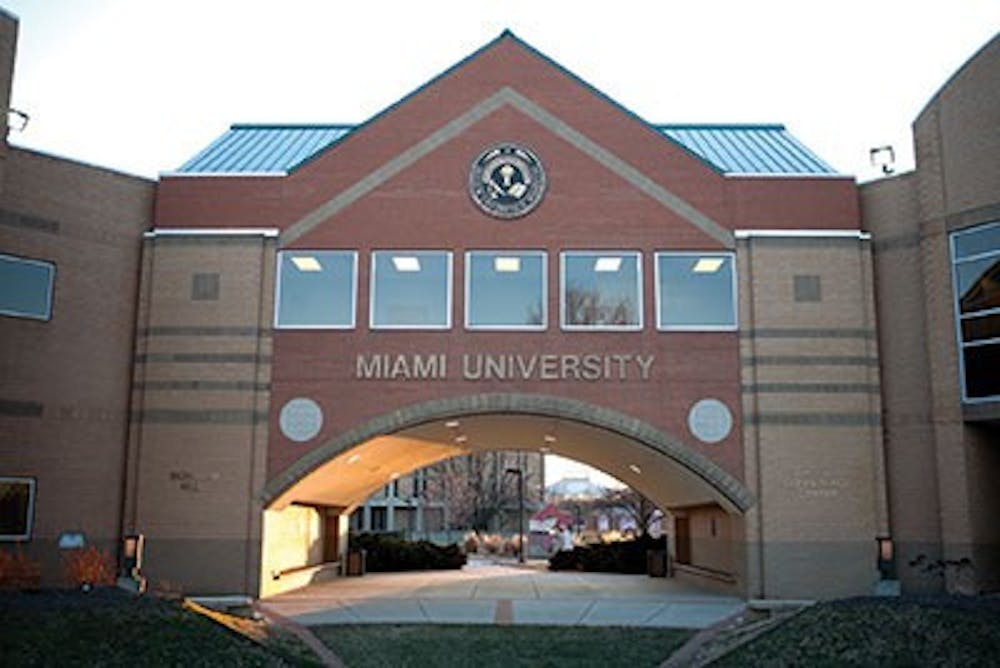When Autumn Allen was admitted to Miami University, she weighed the pros and cons of attending one of the university’s regional campuses versus attending the main one. The price of attending a regional campus is significantly lower, and for some students, it is closer to the comforts of home.
But for others, the regional campuses don’t offer the same opportunities for majors that the Oxford campus does.
“When I was researching majors and minors, the ones that I was really interested in were [in Oxford],” said Allen, a third-year media and communications major with a minor in political science.
Money is a huge factor for students in deciding whether or not a regional campus is for them, since they are considerably less expensive than the Oxford one. Yearly tuition at Miami’s regionals is just more than $7,000, compared to nearly $18,000 at Oxford.
“I always wanted to go to a bigger campus, but at the end of the day, money talks,” said Roshika Nepal, a junior international student majoring in digital marketing.
Stephanie Beck, director of advising for Miami’s regional campuses, said students who want to transfer to Oxford from a regional campus must complete an online form and have at least 16 credit hours and a 2.0 GPA. The whole process of transferring a student takes two to three weeks.
However, regional students don’t have to choose one or the other.
Hunter Bechtel, a junior public administration major, is doing all of his in-person classes in Oxford while taking remote classes at the Middletown regional campus.
“I decided to take my in-person classes through Oxford because they pertain more to my major, while I’m taking most of my more filler classes at the regional campus for my Miami Plan,” Bechtel said.
By doing this, he gets to attend the Oxford classes at a regional campus price.
This comes with its downsides, though. Because there’s little point in driving 40 minutes from Oxford to Middletown, regional students like Bechtel have to “sit and wait” between their classes rather than going home in between them.
As a member of the College Democrats, Hunter said he mostly hangs out in the office located in Armstrong Student Center between his classes.
Enjoy what you're reading?
Signup for our newsletter
There are several specific processes put in place to help regional students transfer more easily to the Oxford location.
For example, the university offers a Canvas course online to prepare relocation students for the transition, and all relocation students are required to talk to their academic advisers before arriving in Oxford.
Beck said she thinks regional students may feel left out due to not having gone through the orientation process and having fewer opportunities to make friends. Their office does the best they can in offering support for relocation students.
Bechtel feels that students who go to the regional campuses get fewer opportunities because they don’t have the money to go to Oxford, and he’s experienced overall favoritism toward main campus students.
In addition to relocation, Bechtel said parking is also a huge issue for regional students and commuters who own cars.
“I would like to see more parking for commuters because there’s only Millett and the one down the hill [from Armstrong] that everyone hates,” Bechtel said. “There’s not a lot of things that make life easier for us.”
Despite all the challenges, Allen said the college-town feel, atmosphere of Oxford and all the opportunities Miami provides make the main campus worth the cost.
“[In Oxford], everything is kind of where you want it to be,” Allen said.
Hunter and Autumn agree that Middletown and Hamilton are not “college towns,” so the adjustment of having that culture has been nice for them.
“I’ve been here for maybe two, three weeks and I’m already exploring so many things,” Nepal said.
Full change of campus requirements, visit the Miami Regionals website.




